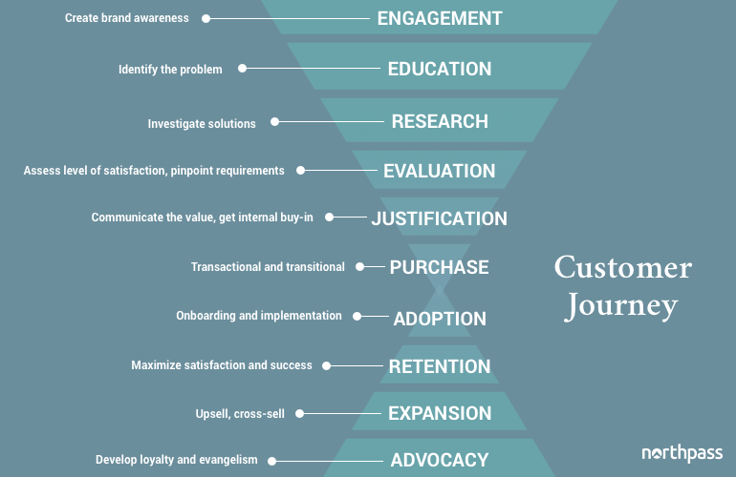Okay, so marketing has done their job and brought a lead to the company. Sales has done their job and made that lead a customer. Now it's time to onboard that customer to make sure they get the most value out of what your company has to offer and stay a customer for life.
Want to skip to a certain section? Just click on the Table of Contents below:
1. Onboard without handholding
2. Make a good first impression
3. Get revenue rolling in faster
6. Leads to a consistent customer experience
7. Facilitate training as an ongoing process
Want to start from the top? Then read on!
Funneling customers toward onboarding and training should a top priority in your automated process. This in turn will not only help your customers succeed, but also transforms them into brand advocates.

In the past, companies siloed onboarding and training into separate functions. Or, they relied on a conventional learning management system (LMS) to dispense training. While those systems may have been automated, they failed to provide an integrated, excellent user experience.
True training automation takes onboarding and training throughout the customer lifecycle to a new level – gathering insights along the way that can be used to attract even more new customers. Today’s most successful companies are using training automation to create a high-touch experience for clients that engages and motivates them to stay with the solution over the long term.
Here’s how training automation can supercharge how your business attracts, onboards and retains new customers.
1. Onboard without handholding
Automated onboarding enables prospects to complete the process on their own without the need for internal resources to handhold them through each step. This is not only more efficient, but allows the SaaS company to invest in and create a more nuanced, branded onboarding and training embedded right into the platform.
By automating onboarding, you can concentrate your people resources where they are needed most – resolving prospects legitimate concerns and questions rather than overseeing rote steps such as manually filling out a form. Benefits of automating your onboarding include:
- Save Time & Money - The saying goes, "work smarter not harder." In this case, automated customer onboarding seems to be a no-brainer. Anything that gives you the ability to get more work done, with less effort, while increasing results - is a dream combination. Organizations can save employee time by only reaching out to customers when they need to. Customers will spend less time learning and gain knowledge on how to use the product/service more quickly.
- Measuring Results - The ability to utilize the build, measure, learn feedback loop is one of the most powerful advantages of automating your customer onboarding. You’ll have access to features like reports about enrollments, course completions, and quiz scores - instantly. With these results, you are able to take the courses you’ve created, learn from them, and improve them. Take your goals and objectives to measure the effectiveness of your training program and determine ways to iterate and improve moving forward.
- Eliminate Errors - An issue with doing any training with people is that humans are prone to errors. With everything you’ll be learning from measuring your results, you’ll be able to eliminate those errors from the onboarding process when you automate it.
2. Make a good first impression
Think of onboarding as the first impression a prospect gets of your SaaS solution. In a blog entry on Kayako, a customer service software, expert Sukhpreet Anand perfectly describes how automated onboarding and training go hand-in-hand with customer success:
“Ultimately a great customer onboarding process comes from understanding the customer and their needs, and proactively offering help and support at the right times”, Anand writes. “Your onboarding process is the one chance you get to leave a lasting impression with a customer; make the most of this opportunity or you just might see them churn.”
Making that good lasting impression means having an onboarding process that’s inviting, frictionless and clearly representative of your value proposition.
This means more than just streamlining the signup process; training automation goes far beyond merely having a digital application sheet. It’s also an opportunity to showcase your training strength.
An automated onboarding process integrated within your platform allows you to monitor how prospects progress through the signup process. Whenever a prospect appears to have hit a roadblock, or abandoned onboarding entirely, an automated training system triggers an alarm, so to speak, and the appropriate instruction or guidance pops up immediately.
With that extra boost, the prospect goes on to complete the onboarding – and ultimately decreasing the number of prospects who drop out.
3. Get revenue rolling in faster
The sooner the prospect signs up, the sooner he or she utilizes the solution, and the sooner the program generates revenue for the client and SaaS organization. That’s the best-case scenario.
Yet, sometimes there can be a lag between signup and usage. An integrated and automated onboarding program tracks not only which customers signed up, but which ones have not yet used your product/service.
An automated system sends out emails to uncover the reason behind the delay. Users may need more technical assistance, which can be quickly remedied through more automated training. When you know the reason, you can provide the relevant guidance to bring them fully on board and generate revenue.
The proactive nature of automation also reduces support calls, which leads to higher revenue through cost reduction. Clients can forgo time-consuming and costly service outreach, because information is so forthcoming and instruction is at their fingertips.
Higher customer satisfaction scores flow to the bottom line. According to McKinsey research, maximizing satisfaction throughout the customer journey can boost revenue by 15 percent, while simultaneously cutting customer service costs by 20 percent.
4. Provide customers insight
While the purpose of your SaaS product may be clearly defined, its appeal to customers may vary. Through automation, you can learn why your clients signed up for the solution. Was it:
- To streamline administrative processes?
- For a bottom line boost?
- To gain more industry-wide knowledge and expertise?
Obtain that valuable insight through an automated training solution that tracks user preferences and needs. Or use it to get to know your clients’ core industry and the tools they need to compete successfully. Say, for example, the prospect is an online retailer in need of a payment app. Armed with that knowledge, training automation can show how your software efficiently bills and collects payments.
Automation makes your platform more proactive by detailing client profiles and behaviors. You can learn where your clients rank within their organizations and what functions they perform. That, in turn, informs what training they need.
Mine that treasure trove of data you obtain from an automated onboarding and training program, and you’ll instantly better understand who your ideal buyers are and what they require to advance through the customer journey.
5. Customize training
Today’s sophisticated SaaS clients expect a more customized approach to training. A static, one-size-fits-all LMS-based training program will no longer cut it. Training must be flexible enough to adapt to their individual needs and requirements.
Once your organization knows what the client hopes to achieve with the solution, customized training modules can be developed to help each and every client use the SaaS solution for optimal benefit.
That training could be anything from embedded modules demoing how to use software features, to white papers written by experts on becoming profitable in the field. When the client signals a need for that training via the automated system, you’ll be ready with a custom set of courses for the client.
Automated doesn’t have to mean impersonal. Consider further customizing training by having your internal experts available to answer questions from clients through video or text chats.
Tailoring your training to meet your client’s individual needs will fuel a longstanding, profitable partnership.
6. Leads to a consistent customer experience
Cusomer experience is defined as the product of an interaction between an organization and a customer over the duration of their relationship. A great customer experience entails an individual's experience matching the individual's expectations.
A recent study from McKinsey & Company stated it best: “Customers seek a consistent experience at all points along the customer journey. Customer satisfaction hinges not on one or two positive encounters, but on the entire timeline of the customer lifecycle.”
Onboarding and training must, therefore, be a standardized, integrated program that reinforces your services, product and brand message throughout the customer lifecycle. Woven into every pop-up message and training video, every sign-up sheet or product launch: an automated onboarding and training system delivers that consistent client experience.
7. Facilitate training as an ongoing process
Commit to training as an ongoing and deeply integrated function of your product, service and operations. Instead of a one-and-done walk-through, training continues well after onboarding and throughout the customer lifecycle. It’s a school that’s open 24/7.
Remember to reinforce that message. When your SaaS solution debuts a new feature or product, send out training modules to current clients who will benefit from the newest launches.
Use training to tout your industry knowledge as well. While your clients want technical instruction, they also crave professional expertise to succeed in their field. Create learning modules and even certification programs that increase their overall knowledge and make them better at their job.
One famous example is Hubspot Academy, which offers easy to understand training for their complex software. Hubspot is an inbound marketing and sales CRM that helps companies attract visitors, convert leads, and close customers. Training, in this sense, underscores your commitment to helping clients improve their business and careers.
8. Humanize your brand
Humanizing isn’t a phrase that typically accompanies a word like automation and yet, automated training presents an excellent opportunity to bring your voice, personality and experience to users.
Display those traits at every step of onboarding and training through personalized instruction, targeted guidance, and online chats.
Bring your product experts to the forefront to share what they know about the product. This supportive ethos shows you care for your customers and their ultimate success. Customers can then leverage that expertise and feel more connected to the brand.
Summary
In business, chasing down leads and driving new business is a clear way to increase sales. But it’s not necessarily the smartest approach to winning more deals.
In fact, most businesses can get so caught up in looking for new customers that they completely ignore their greatest asset - their existing customers.
Ignoring your customers will result in little to no upsells, a lower Net Promoter Score, and increased churn.
So, if you’re thinking of automating your onboarding and training process, or have done so already, ask yourself: Are we utilizing automation to its fullest potential? If you want to learn more, be sure to take a look at our completely free resource, The Beginner's Guide to Creating an Online Training Program.

.png?width=3251&height=1107&name=NP_ByGS_ColorLogo%20(1).png)

